Suchergebnisse für "Factsheet: Energietechnologien gestalten, die für alle sinnvoll und nutzbar sind"
Making electricity networks flexible
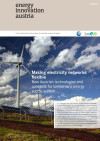
New Austrian technologies and concepts for tomorrow's energy supply system
energy innovation austria
2/2014
Herausgeber: BMVIT and Klima- und Energiefonds
Englisch, 8 Seiten
Downloads zur Publikation
Active Buildings
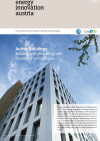
Building and renovating with innovative technologies
energy innovation austria
1/2013
Herausgeber: BMVIT & Klima- und Energiefonds
Englisch, 8 Seiten
Downloads zur Publikation
Tomorrow's heating networks
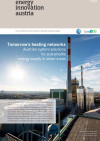
Austrian system solutions for sustainable energy supply in urban areas
energy innovation austria
1/2015
Herausgeber: BMVIT & Klima- und Energiefonds
Englisch, 8 Seiten
Downloads zur Publikation
Bioenergy Technology of Tomorrow
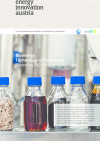
Pioneering R&D Findings from Austria
energy innovation austria
1/2012
Herausgeber: BMVIT & Klima- und Energiefonds
Englisch, 8 Seiten
Downloads zur Publikation
Energy-Sponge: The Building as an Energy-Sponge - Electricity In - Heat Out
Innovative, dynamic control concepts had been developed which enable (air) heat pumps in combination with PV- or renewable grid electricity to use the building mass of a multi-familiy house as heat storage. User acceptance had been evaluated and possible business models had been developed.
New Standards for Old Houses. Sustainable Renovation Concepts for Houses on Estates Built Between the Wars and Post-War

The many housing estates of detached houses in Austria built in the times of economic crisis between the wars and post-war as part of publicly funded housing programmes are the starting point for this research project. The aim is to offer detailed guidelines with basic planning principles for the renovation of these housing estates with detached houses, aiming to reach the standard of a low-energy house or a passive house.
M-DAB2: Material intensity of inner development - resource assessment and localization of urban development potentials
For the first time, the material intensity of inner development (in terms of material quantities) for different design variants is to be considered in the evaluation of inner development potentials. A set of methods for the holistic evaluation of potential areas and different development variants and scenarios for resource-saving inner development will be created.
7th International Summer School - Solar Energy 2003
28. Jul 2003 -
8. Aug 2003
Academia EngiadinaSamedan , CH
Applications - Sustainable Energy Issues
Innovative Concepts for Pumped Storage in Liberalized Grids
In liberalized grids the requirements for pumped storage equipment rise dramatically. The development of a controllable pump turbine to help stabilize the grid is one of the possible solutions to this problem.
Urban Future

Erhebung von Forschungsfragen zum Thema "Resource Efficient City of Tomorrow"
Schriftenreihe
83/2010
R. Obernosterer, A. Karitnig, B. Lepuschitz Berichte aus Energie- und Umweltforschung 83/
Herausgeber: BMVIT
Deutsch, 195 Seiten
Downloads zur Publikation
Marktreifes Plus-Energie-Büro
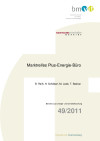
Schriftenreihe
49/2011
B. Reiß, H. Schöberl, M. Leeb, T. Bednar Berichte aus Energie- und Umweltforschung 49/
Herausgeber: BMVIT
Deutsch, 164 Seiten
Downloads zur Publikation
Contracting as a instrument for renovation

Development of contracting models for comprehensive renovation service packages.
Innovative moth-protection system for sheepwool insulation

This project developed a novel "bio-pesticide"-formula by screening plant extracts and minerals for their strong repellant activity in order to protect sheepwool insulation from cloth moth infestation. It was investigated and examined by state-of-the-art-technology that the anti-moth-mixture extracted from plants and minerals, acts as a valid alternative to existing pest control agents.
Pilot project gaining-building-land Pongau
Gaining extra space for additional households through sustainable renovation and/or extension of 8 detached houses by integrating consulting, planning, energy efficiency concepts and financing.
IEA PVPS Task 12: PV Environmental Health And Safety (working period 2016-2018)
The aim of IEA PVPS Task 12 is to foster international collaboration in the area of photovoltaics and environment. That includes compiling and disseminating accurate Information on environment, health, safety, and other aspects of sustainability associated with the life-cycle of photovoltaics. The austrian contribution addresses LCA, implementation of sustainability aspects and dissemination.
IEA Bioenergy Task "Thermal Gasification of Biomass"
Obtaining, preparation and circulation of information about international evolutions in the field "thermal gasification of biomass" as well as management of different task emphases.
CellPor - cellulose polymerized - new methods for the processing of a polymer-cellulose-foam according to ecological criteria in construction
The development of a spray applicable cellulose composite as insulating material on the basis of renewable resources, combined by the development of a prototype for the spray-on technology for processing the new, water free cellulose composite are the demanding challenges of this project.
Reallabor 100% renewable energy Waldviertel
Under the motto "Always one step ahead", the aim is to develop a content-related and economic implementation concept for a "Reallabor 100% erneuerbare Energie Waldviertel".
Energy-storage concrete: Thermal Component Activation

This planning guide provides information on the option of solely heating and cooling small-volume residential buildings by means of thermal component activation (TCA). Concrete instructions on the planning of residential buildings with thermally-activated ceilings are also provided.
Felix Friembichler, Simon Handler, Klaus Krec, Harald Kuster
Herausgeber: BMVIT
Englisch, 122 Seiten
Downloads zur Publikation
CityCalc - Calculation Tool for Energy-Efficiency in Urban Planning
To assess the energy performance of urban planning projects in early design stages with low input and evaluation effort within the project CityCalc, an easily applicable planning and evaluation tool has been developed.
